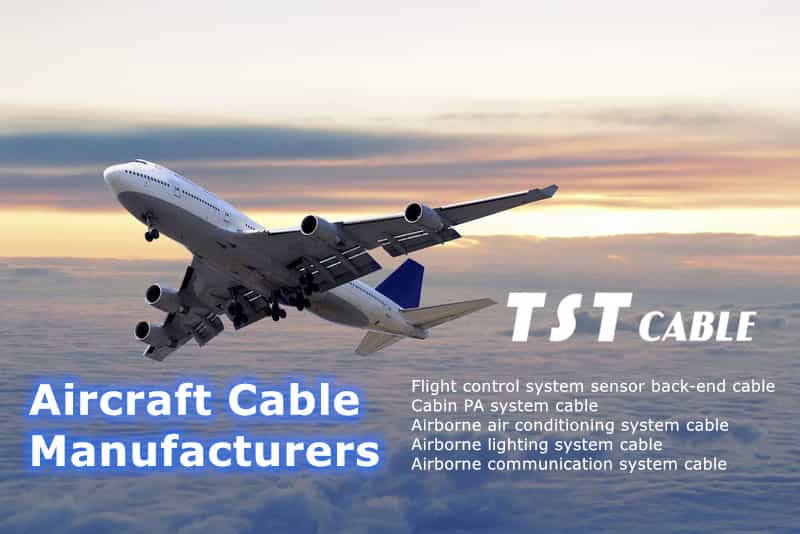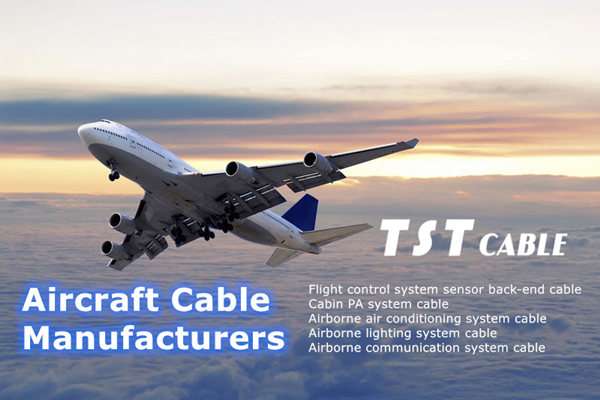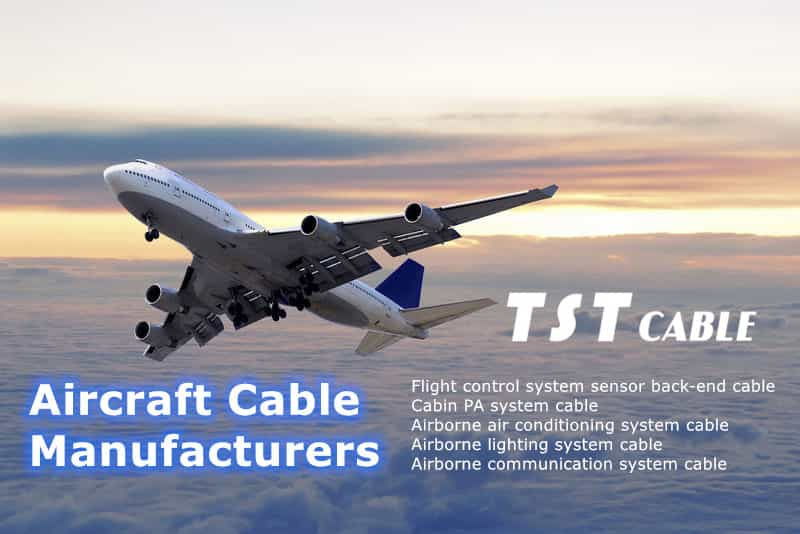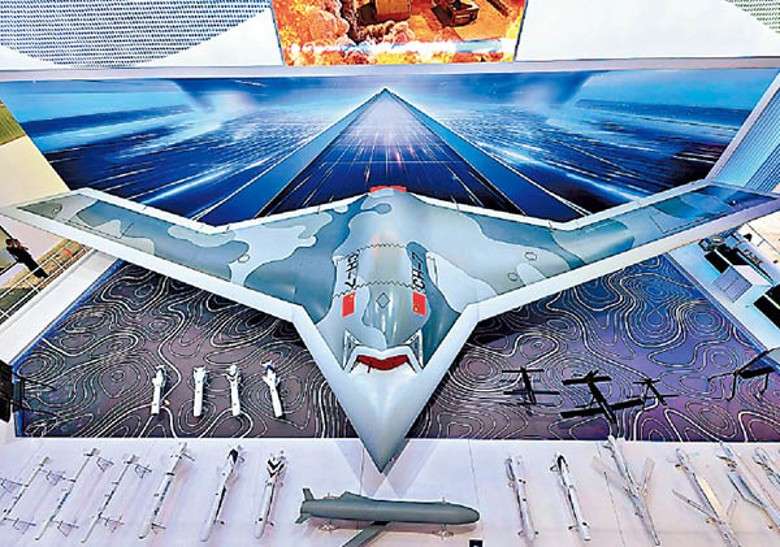Do you know how to choose the characteristics and models of Aircraft Cable? Which one is more suitable for your equipment, PFA cable, PES cable, PTFE cable, or PEEK cable? Let’s take a look.

According to the International Air Transport Association (IATA), the number of passengers will increase from 3.8 billion in 2016 to 7.2 billion by 2035. According to Airbus’s forecast in 2019, air transport volume will increase by 4.3% per year by 2038. It is expected that about 39,200 new passenger aircraft and special transport aircraft will be added during the period. The increase in the production of new aircraft will also promote the growth of demand for Aircraft Cable.
A smart airport is an airport with high perception, interconnection and intelligence capabilities. Through the Internet of Things, cloud computing, big data, mobile Internet and other technical means, a set of intelligent systems based on digital systems is established to achieve real-time, accurate and full acquisition of airport service and management information and sorting, analysis, processing and utilization, so as to achieve the goals of improving airport operation efficiency, improving passenger service level, creating value benefits, optimizing management decisions, and improving emergency response capabilities.
An airport is a large and complex basic service facility involving multiple operators. It has complex business scenarios such as airside, terminal, and landside. Different operators and different business scenarios have different needs and understandings of “smart airports”. Therefore, the comprehensive realization of smart airports must realize the construction and development of smart airside, smart terminal and smart landside.
The core work of the airport airside is to ensure the safe and efficient operation of aircraft. Through real-time acquisition of multi-source heterogeneous information such as meteorological data, air traffic control data, surface radar data, runway foreign object monitoring system data, automatic berthing and guidance data, special vehicle dispatching data, and perimeter safety monitoring data, the monitoring and early warning of airside safety are realized. Then, through the integration, analysis, and mining of relevant data, the intelligent evaluation and optimization suggestions of runway taxiway operation capacity, special vehicle dispatching, and runway and taxiway structure are realized, so as to provide reasonable resource guarantee and configuration for the efficient operation of the airside.
Aircraft Cable are cables specially designed and manufactured for the aviation industry, used to transmit power, signals and data in aircraft such as aircraft, helicopters, and drones. They must be able to work under extreme conditions, including high temperature, low temperature, vibration, radiation, and erosion by oil and other chemicals.
Next, TST cables will give you a detailed introduction to Aircraft Cable technology, applications, product characteristics, advantages, standards and testing related information.
1. Technology of Aircraft Cable
Material: Aircraft Cable usually use high-quality metals (such as copper) as conductors and adopt high-temperature resistant and corrosion-resistant insulation materials (such as fluoroplastics).
Shielding layer: In order to reduce electromagnetic interference (EMI), Aircraft Cable often contain metal braids or metal foil shielding layers.
Connectors: The connectors used in Aircraft Cable must meet strict standards to ensure reliability and durability in harsh environments.
2. Product characteristics of Aircraft Cable
Lightweight: In order to reduce the weight of aircraft, Aircraft Cable are designed to be very light and small in size.
High and low temperature resistance: Can maintain performance at extreme temperatures (-90℃~250℃).
Corrosion resistance: Can resist corrosion from various chemicals.
High reliability: Maintain stable performance during long-term operation.
Anti-electromagnetic interference: Strong shielding performance for electromagnetic interference (EMI) and radio frequency interference (RFI), high temperature resistance, suitable for use in aerospace equipment, excellent conductivity, and good conductivity stability.
Safety: Low smoke, halogen-free, flame retardant, with good fire, explosion and radiation protection properties.
Flexibility: Able to withstand frequent bending and vibration.
Long life: Designed for long service life and low maintenance cost.
3. Standards for Aircraft Cable
Aircraft Cable follow a variety of international and national standards, including but not limited to:
MIL-DTL-81040: US military standard that specifies physical, electrical and environmental performance requirements for Aircraft Cable.
ASD EN 45545: European standard that deals with fire safety for railway vehicles, but its principles also apply to Aircraft Cable.
ISO/IEC 11801: International Organization for Standardization and International Electrotechnical Commission standard for information and communication technology (ICT) cables.
4. Application of Aircraft Cable
Aircraft Cable play a vital role in aircraft and spacecraft, and their applications cover almost all electrical and electronic systems of aircraft. The following are the main application areas of Aircraft Cable:
Power transmission system:
Main power distribution: Power is transmitted from generators or batteries to various parts of the aircraft.
Auxiliary power unit (APU): Provides power for ground operations and pre-takeoff preparations.
Engine starting system: Used to start the aircraft’s main engine.
Signal and data transmission:
Flight control system: Includes signal transmission between autopilot, flight guidance system and flight control computer.
Navigation system: signal connection of GPS, inertial navigation system (INS) and radio navigation equipment.
Communication system: voice and data communication between pilots and ground tower, other aircraft and satellites.
Monitoring system: flight data recorder (black box) and aircraft health monitoring system.
Entertainment and information system:
In-flight entertainment system: provides audio and video services to passengers.
Cabin management system: controls functions such as lighting, temperature, broadcasting and seat adjustment.
Safety and emergency system:
Fire detection and fire extinguishing system: monitors and responds to fire.
Emergency lighting and evacuation indication system.
Emergency locator transmitter (ELT): sends distress signals after an accident.
Environmental control system:
Air conditioning system: regulates the temperature, humidity and air pressure of the cabin and cockpit.
Pressure regulation system: maintains cabin pressure balance.
Fuel system:
Fuel quantity indication system: monitors fuel level.
Control circuits for fuel pumps and valves.
Landing gear system:
Landing gear retraction and extension control and position indication.
Weapons and defense systems (military aircraft):
Weapon mounting and release mechanisms.
Defense electronic warfare systems: Interference with enemy radar and missile guidance.
Scientific research and experimental equipment (scientific research and experimental aircraft):
Power supply and data acquisition lines for experimental equipment.
Ground support and maintenance systems:
Ground power interface: Power supply to the aircraft when parked.
Maintenance and test interface: Used for aircraft system inspection and repair.
The application of Aircraft Cable in these systems ensures the safe and efficient operation of aircraft, while also providing necessary services and comfort experience for passengers and crew. In extreme flight environments, these cables must have extremely high reliability and durability to cope with various possible challenges.
5. Types and characteristics of Aircraft Cable:
Due to their special use environment, Aircraft Cable have strict requirements in design and manufacturing to adapt to the extreme temperature, pressure, vibration and electromagnetic environment in aircraft or spacecraft.
Aerospace, locomotive and vehicle and other fields require high temperature resistant wires and cables, long-term continuous working temperature of 125 degrees, 135 degrees, 150 degrees, 180 degrees, 200 degrees, 250 degrees and above 250 degrees. Currently, irradiated cross-linked polyolefins, silicone rubber and other wires and cables are commonly used; the following Xi’an wire and cable manufacturers introduce two new types of high temperature resistant wires and cables;
Polyimide insulated wires and cables:
Mainly used in aviation, aerospace, satellite and atomic energy industries, with excellent radiation resistance and high temperature resistance.
Unplug and signal transmission long-line cable:
Used for connection between satellite ground signal receivers and ground signal processing equipment, the cable is required to have good signal transmission performance and flexibility.
Nickel-plated copper core polytetrafluoroethylene insulated light installation wire:
Applied to special occasions of high temperature resistance and corrosion resistance on aircraft and aircraft, with good high temperature resistance and corrosion resistance.
Silver-plated copper core polytetrafluoroethylene insulated light installation wire:
Also used in aircraft and aircraft, with good high temperature resistance and corrosion resistance.
Tinned copper core ethylene-tetrafluoroethylene copolymer insulated wire and cable:
Used in aircraft and aircraft where high temperature and corrosion resistance are required, it also has good high temperature and corrosion resistance.
Fluoropolymer insulated cable:
Including polytetrafluoroethylene (PTFE), polyperfluoroethylene propylene (FEP), polyvinylidene fluoride (PVDF), ethylene-tetrafluoroethylene copolymer (ETFE), cross-linked ethylene-tetrafluoroethylene copolymer (XETFE), tetrafluoroethylene-perfluoroalkyl vinyl ether copolymer (PFA), etc. These materials have excellent thermal and chemical stability.
High temperature resistant wire and cable:
The operating temperature can reach 125°C to above 250°C (some customized high temperature cable products of TST Cables can reach up to above 1200°C), and commonly used materials include irradiated cross-linked polyolefins, silicone rubber, fluororesins, polyimide, mica, magnesium oxide, etc.
Polyethersulfone (PES) insulated wire:
Polyethersulfone (PES) insulated wire has excellent heat resistance, physical and mechanical properties, electrical insulation properties, extrusion molding properties, especially the outstanding advantages of being able to maintain stable performance in continuous use at high temperatures and in environments with rapid temperature changes: heat deformation temperature is 200-220 degrees, continuous use temperature is 180-200 degrees, and UL temperature index is 180 degrees; it can withstand 150-160 degrees hot water or steam, and is not corroded by acids and alkalis at high temperatures; the elastic modulus is almost unchanged at -100–200 degrees, especially above 100 degrees, it is better than any thermoplastic resin;
Polyetheretherketone (PEEK cable) insulated wire:
Polyetheretherketone(PEEK cable) is a super heat-resistant thermoplastic resin. The long-term continuous use temperature is 250 degrees, and the UL temperature index is 250 degrees. PEEK is a flexible resin with good creep resistance. It is self-extinguishing and can meet UL94V-1 (thickness 0.3mm), 94V-0 (thickness 1.5mm), and 94V-5 (thickness 3.2mm) requirements without adding any flame retardant.
Composite cables for aerospace:
Cables that combine multiple functions, such as power transmission, signal transmission, and data communication, are used to simplify wiring and reduce weight.
High-temperature resistant shielded wires for aviation:
Equipped with a shielding layer to reduce the impact of electromagnetic interference (EMI) and radio frequency interference (RFI).
Navigation light cables:
Cables used for aircraft external lighting systems, such as landing lights, navigation lights, etc.
6. Testing of Aircraft Cable
Aircraft Cable need to pass a series of rigorous tests to verify their performance and reliability, including:
Tensile strength test: Evaluate the mechanical strength of the cable.
Bending test: Simulate the bending of the cable in actual use.
Thermal aging test: Check the performance changes of the cable at high temperatures.
Flame retardant test: Ensure the performance of the cable in a fire.
Electromagnetic compatibility (EMC) testing: Evaluate the cable’s sensitivity to electromagnetic interference and the electromagnetic interference it generates.
Cooperate with Aircraft Cable manufacturer TST CABLES to customize high-quality Aircraft Cable
Soaring into the sky, safely accompanying, TST cables Aircraft Cable are silently escorting at an altitude of 10,000 meters in many large cities in China. It is not only a bridge between power and signal, but also a solid foundation for every safe takeoff and landing. Each type of cable has its specific use and performance indicators. Choosing the right type of cable is crucial to ensure the normal operation of avionics systems. When designing and selecting, TST CABLES engineers will take into account the mechanical strength, electrical performance, environmental adaptability and specific application scenarios of the cable. In extreme environments, TST cables’ cables show extraordinary flexibility, toughness and stability. Behind each cable is the deepest respect for life and the purest pursuit of technology. Cooperate with TST cables, use professionalism, quality and responsibility to explore a broader blue sky dream together. If you are not sure which Aircraft Cable to use, please send us an email to consult TST cables and you can get free (PFA cable/PES cable/PTFE cable/PEEK cable) samples.
Also available in:
English





